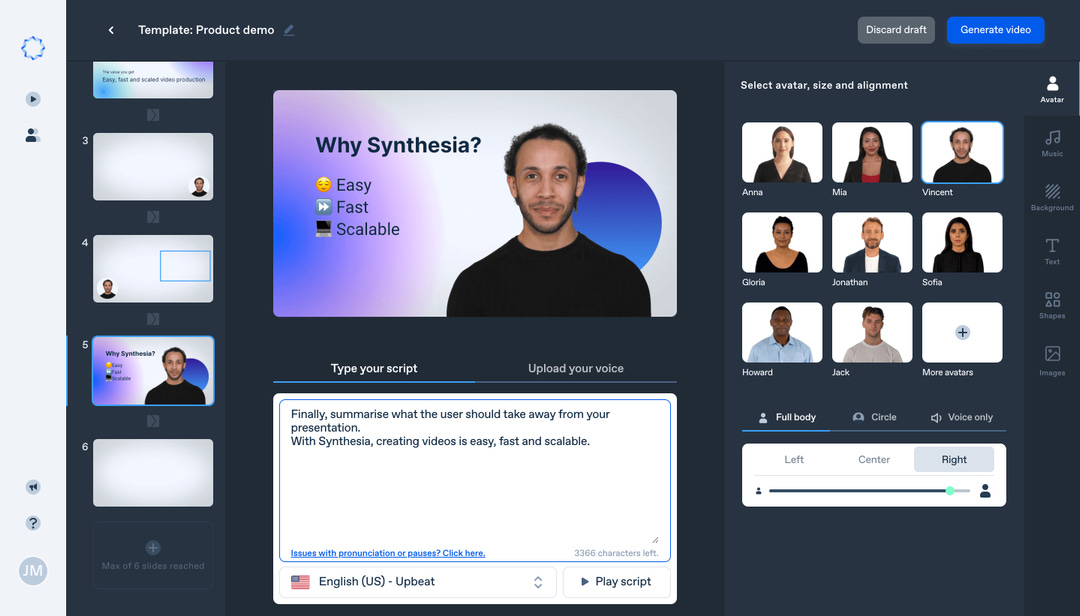I recently tumbled down a rabbit hole learning about the life and work of Buckminster Fuller, a multi-hyphenated American engineer, architect and futurist. In modern circles, Fuller may be best known for coining the term Ephemeralization, or the process by which technological advancement allows humans to do “more and more with less and less until eventually you can do everything with nothing.”
With striking augury, Fuller envisioned the interdisciplinary growth curve that has unfolded over the past many decades. Technological advancements, specifically in computing and software, have transformed atoms to bits.
As I have written in past blogs, COVID-19 has accelerated ecommerce adoption. Consequently, there are certain second order effects that will occur with increases in traffic and consumption online.
One is that brands will need to create more digital content to meet consumers needs across various platforms. These assets will need to be interoperable and seamlessly integrate across the future ‘metaverse’.
The second will be that in order to differentiate amongst an increasing plane of competition, these creative assets will need to be more and more personalized.
This presents a paradox. How can you both scale and personalize content in a cost efficient manner?
The answer may be Synthetic Media.
What is Synthetic Media?
Synthetic media refers to images, videos, sounds, or any other form of content that have been generated, edited, or enabled by artificial intelligence. In its simplest form, artificial intelligence can thought of as a circular feedback loop that improves decision making over time by registering causality and using it to adjust future decisions.
In other words, synthetic media is content that is automatically created, edited and adjusted based on new information. Particularly, the development of AI tools such as generative adversarial networks (GANs) or natural language generation (NLG) are now making it possible to automate content production with the goal of reducing the time, cost, and frictions associated with conventional content production techniques.
Over the past year, the space has seen significant traction. News mention of digital content spiked.
In Asia, the world-blazing K-Pop band BTS has already pioneered using synthetic media to help scale their advertising and partnerships. Additionally, during China's annual "Double 11" shopping spree on Nov 11, multiple brands such as Philips, L'Oreal, Unilever, and L'Occitane used virtual hosts to promote their products online throughout the day. China’s “King of Lipstick” Li Jiaqi, was joined by a virtual host during a livestream that adjusted it’s facial expressions and gestures and screamed “OMG!”, “Buy it!” Buy it!” to help drive sales.

"After using the AI broadcaster, we noticed record views every day," said Xiang Jing, who is in charge of Philips outlet on the Tmall shopping platform, adding that nearly 80,000 people watched the livestream during the peak hours.
During livestreaming sessions of popular snack company Three Squirrels, a cute, short-haired cartoon girl appears after the human host leaves to introduce hundreds of snacks offered by the brand. According to Li Shucai, who runs the brand's livestreaming business, sales driven by the AI host were almost the same as the real host.
In the US, Genies is perhaps the most recognizable personalized avatar startup thanks to high-profile partnerships with the likes of Gucci and multiple venture capital rounds. But the landscape continues to evolve with emerging players developing novel forms of asset creation.
Scalable Content Production
Image synthesis solutions can help brands and retailers produce e-commerce content faster than traditional photoshoots by using photorealistic AI-generated models, virtually dressing previously photographed models, or even artificially generating new poses. Moreover, AI enables Personalization as a Service by leveraging the flow of user data to customize video and photo content to optimize for conversion. This may mean showing models that look similar to the user or adjusting their wardrobe, copy, context or message to create a connection based on a user’s interest. For example, image synthesis may be able to determine based on my profile that I like the Philadelphia Eagles, thus personalizing an advertisement to speak with a Philly accent (‘wooder’) and don an Eagles jersey. This output will look entirely different than someone else, yet the marginal cost will be zero. Replication gives way to personalization.
New Forms of Engagement
The applications of synthetic media extend beyond video creation and avatars. Copywriting, site personalization, email campaigns and product listings are all up for disruption.
For example, Contentyze is a startup that automatically create product descriptions from spreadsheets. Vui.ai is an AI powered digital experience management that automates and customizes everything from product images, homepages, product listings and email campaigns. Similarly, Copy.ai is a GPT-3 AI-powered platform that generates copywriting tools for business customers. It can write a blog post outline based on a few sentences and create link descriptions for Facebook ads and even generate a company motto.
On the video end, Synthesia is an AI-enabled video generation platform that allows companies to quickly (and cheaply) generate a video without cameras, actors, or microphones.
Soul Machines, another start-up, mixes video and voice synthesis to create digital humans that make virtual interactions more life-like. Nestlé’s cookie brand Toll House recently partnered with the startup to create a virtual human coach named Ruth to guide users through the original Toll House cookie recipe or help them customize the recipe to their preferences.
Virtual Influencers
Virtual influencers represent an interesting schism from traditional digital marketing that is both a standalone narrative arc and a tool for conversion. Lil Miquela was perhaps the first vestige of this and has humanized herself to transcend traditional influencer marketing and established new era of storytelling that has powered her to 3 million followers on Instagram (Brud, the parent company behind Lil Miquela, recently was acquired by Dapper Labs).
The Drum outlines five reasons why brands should consider integrating virtual influencers.
Integrate products more seamlessly. The life cycle of a product can more easily be inserted into each part of a virtual influencer’s story – and in a compelling way. This is sometimes more challenging to do with a real-life influencer.
Automate communication. Virtual influencers can have hundreds of conversations at the same time.
Create, invent and imagine. In the virtual world, the creative possibilities are endless. There are fewer restrictions with working with a robot v a human.
Manage risk. Brands are in control of the content.
Closing Thoughts
COVID-19 forced many brands to rethink content production. Big photoshoots gave way to UGC content. Atoms slowly gave way to bits.
The internet has digitized the distribution layer. User data has made distribution more efficient as individuals can easily be indexed based on a number of attributes that are both exogenous to your internet profile (age, gender, location) and endogenous to your online activity (likes, groups, music).
However, the production layer still remains offline. Individual users see the same content for a specific brand as as everyone else. This is because producing digital content is incredibly costly and time intensive. Scale requires replication and replication thwarts personalization.
Synthetic media dematerializes the production layer and solves the scale & personalization paradox. Software leads to distribution at scale, AI leads to personalization at scale.
Synthetic media also parallels the trajectory of our online experience. The best digital content reflects the ethos of their medium. For example, the best performing TV ads generally have high profile actors and large budgets. The best performing Tik Tok and Instagram ads are generally user generated content. The best performing ads of the metaverse will be ones produced within the metaverse.
I believe synthetic media will usher a new age of digital marketing. Brands and advertisers will be able to create one-to-one customer touchpoints at scale. Synthetic media will ingest personalize data to better convey value propositions and delight consumers, which many have expressed interest for. According to a study from TextNow, a free texting and calling app, Gen Z shoppers are willing to exchange personal information for personalized advertising.
There are a number of derivatives that emerge from this future state. On the negative end, deep fakes will be used by bad actors to spread misinformation and scandalize individuals. I expect that it will be at the forefront of public and political discourse in the near future.
On the positive side, content producers will be able to do more with less. Creators and celebrities will be able to license their likeness to be used for synthetic media, providing them with passive income streams and unlocking valuable time to focus on creating new content rather than advertising on the behalf of another brand.
Web3 opens up a number of interesting possibilities for the space. It could provide the infrastructure to safeguard from deep fakes. For example, different layer 3 protocols could be developed to handle the credentialization and validation of likeness licensing.
Coincidingly, influencers (and their likeness) can be tokenized. Digital content could be distributed on the blockchain and seamlessly embed transactions. ERC-721 (the protocol powering NFTs) and newer protocols will allow the influencer to earn passive income every time an advertisement converts into a sale. This will happen automatically and instantly upon the transactions.
Social tokens will allow followers to participate in their favorite influencer’s financial upside. These followers will have stronger incentives to purchase or engage with advertisements containing the likeness of an influencer that they ‘own’. This should drive better performance of these ads and increase ROAS. As such, that influencer will become in greater demand by advertisers. This should increase the value of the influencer’s token and/or the syndication of digital content containing their likeness. Consequently, their token price increases as does their popularity. This directly benefits the original consumer who converted from the advertisement and owns the influencer token. The future is positive sum.
While it may appear wonky and artificial, as Chris Dixon frequently points out, the next big thing starts out looking like a toy.









